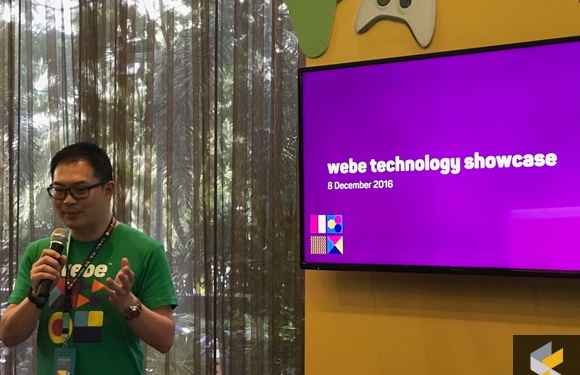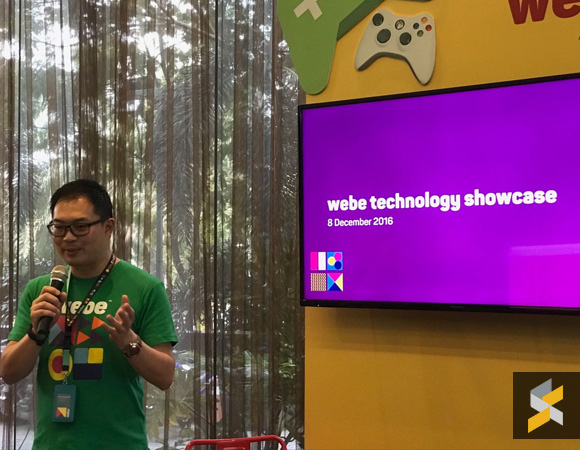Barely 3 months into full commercial service, webe has shared its upcoming 4G network plans that will commence very soon. At the moment, webe operates on FDD-LTE at 850MHz (Band 5) which is great for signal penetration and wider coverage. In the next phase, webe will be focusing on building up network capacity to support more users and to create new wireless possibilities.
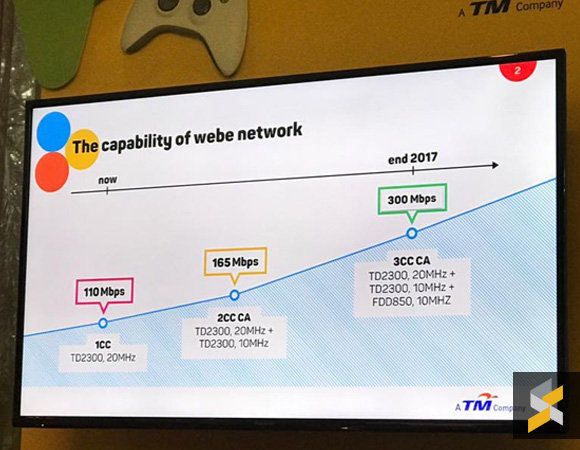
Beginning Q1 2017, webe will be rolling out 2.3GHz TD-LTE coverage which will provide a higher capacity on top of its existing 850MHz LTE network. According to the chart shown above, this would possibly deliver faster speeds up to 110Mbps. For the first phase, webe will be targeting 5 key areas in Malaysia namely the Klang Valley, Johor Bahru, Penang, Kuching and Kota Kinabalu.
To take their network further, webe will be supporting LTE-Advance through carrier aggregation. To do this, it will use both 20MHz and 10MHz blocks of its 2300MHz spectrum. As a safety net, webe has domestic roaming with Celcom to provide a nationwide coverage in places where webe isn’t available.
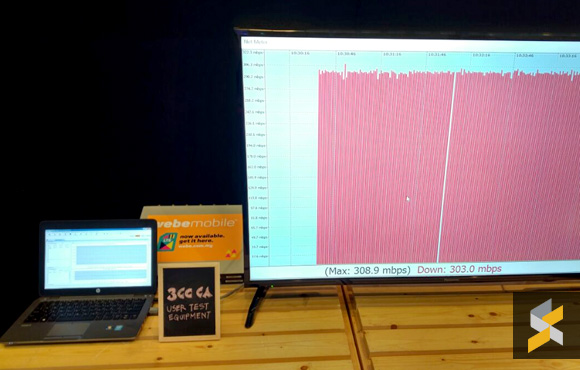
Ultimately, webe is aiming to provide even faster speeds and bandwidth with its 3 carrier aggregation. This will use both FDD (850MHz) and TD-LTE (2300MHz 20MHz + 10MHz) bands which could deliver speeds up to 300Mbps. The folks at webe had a set up a demo shown above which showcases its capabilities to push 300Mbps.
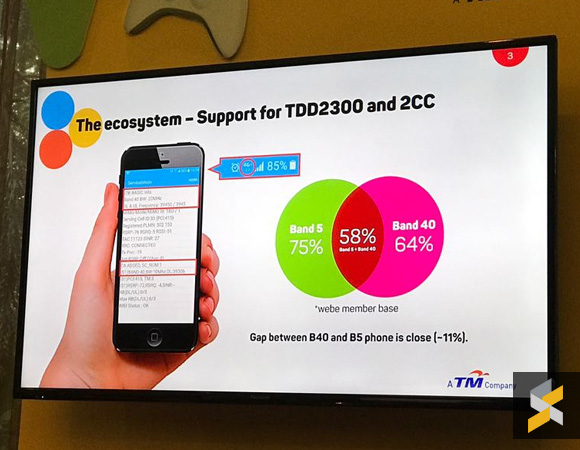
In terms of compatibility, most new smartphones today are able to support both 850MHz (Band 5) and 2300MHz (Band 40) bands. webe has also shared that 75% of its subscribers are tapping onto their 850MHz LTE network and 58% of them are able to support both bands. As a comparison, Yes LTE network operates on TD-LTE supporting both 2300MHz (Band 40) and 2600MHz (Band 38). Meanwhile, the other main LTE telcos are utilising both 1800MHz (Band 3) and 2600MHz (Band 7) on FDD-LTE.
For its ultimate goal of having 3 carrier aggregation (FDD+TD LTE), we are told that the solutions are ready but it depends on manufacturers to support them in the upcoming smartphone models to come. China and India will be a key driver in this area and webe wants to be ready once the technology has matured.
webe for home
During the media briefing, it was hinted that webe will be going beyond just mobile. Currently it is focused on providing unlimited calls, text and data on smartphones, and they charge extra for those who wish to tether. With a large capacity network, webe is looking at connecting homes where fibre connectivity isn’t possible.
Since their network exercise is to switch on TD-LTE at 2.3GHz, we believe this also marks a transition of its WiMAX broadband (P1 WiMAX) to LTE. The fixed broadband service running at 2.3GHz is still in service and eventually it will be phased out. According to webe, the roll out for TD-LTE 2.3GHz can be done quickly and we think it’s seamless for them coming from WiMAX.

